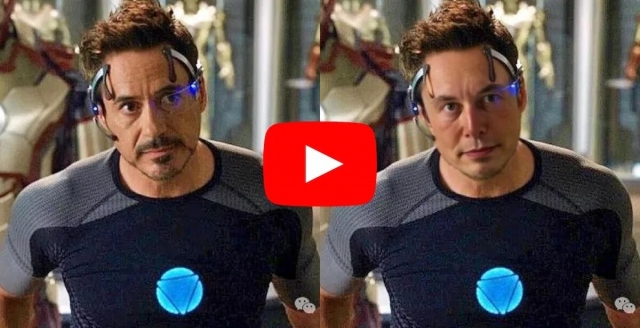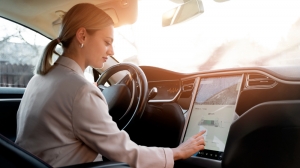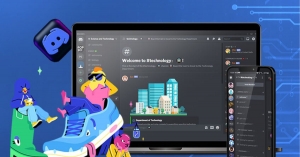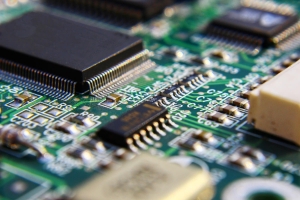In recent years, video face swapping technology has been gaining popularity as one of the most innovative and fun ways to create content online. From social media influencers to digital marketers, the ability to seamlessly swap faces in videos has sparked new creative possibilities. But beyond the fun and entertainment, this technology is making a significant impact on online content creation. It has opened up new avenues for engagement, storytelling, and even marketing strategies.
In this article, we'll explore how video face swapping is transforming the way content is created and consumed. We'll also look at the implications of this technology, its uses in different industries, and the ethical considerations that come with it.
What is Video Face Swapping?
Video face swapping refers to the process of replacing one person's face with another's in a video. This can be achieved through artificial intelligence (AI) and deep learning algorithms, which map the facial features of one person and apply them to another’s face in the video. The result is a seamless and often humorous switch that can make videos much more engaging and entertaining.
The technology is often used in short-form videos on platforms like TikTok, Instagram, and YouTube, where users create playful content by swapping faces with celebrities, friends, or even characters from movies and TV shows.
How Does Face Swapping Work?
Video face swapping relies heavily on AI-powered technology. These systems analyze and track the key facial features in a video, such as the eyes, nose, mouth, and jawline, to create a digital replica of a person’s face. Once this replica is created, the system overlays it onto another person’s face in the video, ensuring that movements and expressions match seamlessly.
Here's how the process typically works:
- Facial Recognition: The AI identifies key facial landmarks in the original video. This involves detecting the face's position, orientation, and expressions.
- Mapping and Translation: The software then translates the facial features of the new face and applies them onto the original subject, ensuring that the lighting and texture match perfectly.
- Blending: After the face is swapped, the AI blends the new face with the body and background, making it appear as though the face swap was part of the original video.
In essence, this technology uses computer vision to identify and modify the faces in a video, creating a believable swap that can be used for a variety of creative purposes.
Why is Video Face Swapping Gaining Popularity?
There are several reasons why face swapping in videos has caught the attention of content creators and marketers alike.
1. Increased Engagement
One of the primary reasons face swapping has become so popular is its ability to engage viewers. Content that involves face swaps is often more entertaining and relatable, especially when it includes humorous or unexpected combinations. The novelty of swapping faces with famous personalities or fictional characters often encourages more viewers to share the content, helping it go viral.
2. Enhances Creativity
Face swapping allows for limitless creative possibilities. Creators can put their own spin on popular media, make amusing edits, or even create entirely new characters by combining different faces. This gives creators the freedom to explore new ideas without needing advanced video editing skills.
For example, influencers might swap faces with a celebrity to create comedic skits, or marketers might use face swaps to produce relatable content that appeals to their audience’s sense of humor or pop culture knowledge.
3. Accessible Technology
Previously, creating high-quality face swaps required advanced technical skills or specialized software. Today, with the rise of free online tools and mobile apps, anyone can use video face swapping technology. Tools like free unlimited video face swap platforms allow users to create impressive edits without the need for professional video editing software, democratizing content creation in a way that wasn’t possible before.
4. Increased Personalization
Video face swapping can also be used to personalize content. For instance, marketers can create personalized advertisements by swapping a person’s face with someone who fits their target audience. This makes the content feel more intimate and directly relevant to viewers, increasing its impact.
Impact of Video Face Swapping on Different Industries
Face swapping isn’t just a fun tool for social media—it has practical applications across various industries, from entertainment to marketing. Let's explore how video face swapping is making waves in different fields.
1. Entertainment and Social Media
The entertainment industry has embraced video face swapping as a way to enhance the fun and engagement of online content. Platforms like TikTok, Instagram, and Snapchat have integrated face-swapping features into their apps, making it easier for users to create viral videos. Content creators and influencers often use these tools to entertain their followers with amusing face swaps featuring celebrities or popular characters.
On YouTube, face swaps have become a trend in comedic skits, meme culture, and reaction videos. Viewers enjoy the element of surprise when creators swap faces unexpectedly, making these videos more shareable and engaging.
2. Marketing and Advertising
In the marketing world, face swapping has proven to be a powerful tool for creating unique and engaging content. Brands can use this technology to personalize advertisements and create campaigns that resonate with their audience. By using face-swapping technology, companies can take their product promotions to a new level by incorporating humor and relatability into their ads.
For example, a brand could create an ad where consumers see themselves trying out a product, adding an element of personalization that increases viewer connection. This approach also makes campaigns feel fresh and interactive, improving audience engagement and brand recall.
3. Film and Animation
In the film industry, face swapping is used for digital effects and CGI. Filmmakers can use this technology to replace actors’ faces in post-production, saving time and money compared to traditional methods. Additionally, face swaps are used in animation to create realistic character animations, where the movement and expressions of real actors are transferred onto animated characters.
This technology has also revolutionized the way films and television shows are created, offering an alternative to traditional makeup and prosthetics.
4. Education and Training
In education, video face swapping can be used to create engaging training materials. For example, instructors can create videos where they replace the faces of students with famous historical figures or industry leaders to make the learning experience more enjoyable. This approach can help boost engagement and retention by making lessons more interactive and relatable.
Ethical Implications of Video Face Swapping
While face swapping is undoubtedly a fun and engaging tool, it also comes with ethical concerns that need to be addressed.
1. Misinformation and Deepfakes
One of the biggest concerns with face swapping technology is its potential to be used for creating deepfakes—videos where someone’s face is replaced with another's in a misleading way. Deepfakes have been used to spread misinformation, manipulate political messages, or create fake celebrity videos. This has raised concerns about the potential for abuse and the difficulty in distinguishing between real and manipulated content.
2. Privacy Concerns
Another issue is privacy. People might use face-swapping technology to create videos featuring individuals without their consent. This could lead to reputational damage, harassment, or emotional distress. For instance, swapping someone’s face into inappropriate or compromising scenarios could have serious consequences.
3. Intellectual Property
Content creators should also be mindful of intellectual property rights when using face swapping. For example, swapping faces with celebrities or characters from copyrighted films without proper authorization could lead to legal issues, especially in marketing or commercial settings.
Future of Video Face Swapping
As AI technology continues to evolve, we can expect video face swapping to become even more advanced. With improvements in computer vision, deep learning algorithms, and real-time processing, the technology will likely become more accessible and precise, allowing for even more realistic and interactive experiences.
However, as with any emerging technology, it’s important to strike a balance between innovation and ethics. Regulation may be needed to ensure that face-swapping tools are used responsibly, especially in cases where they can have a negative impact on individuals or society as a whole.
Conclusion
Video face swapping has already made a significant impact on online content creation, offering exciting new opportunities for entertainment, marketing, and even education. Its ability to engage viewers, boost creativity, and make content more personalized has made it a game-changer for creators and brands alike.
However, as this technology continues to evolve, it is essential for content creators and marketers to be mindful of the ethical implications. By using video face swapping responsibly, we can continue to enjoy its creative possibilities while mitigating the risks associated with its misuse.
As the technology improves and becomes more accessible, the possibilities for video face swapping are endless. Whether you are a content creator, a marketer, or simply someone looking for a fun way to express yourself, face-swapping technology is sure to continue shaping the future of online content creation.






